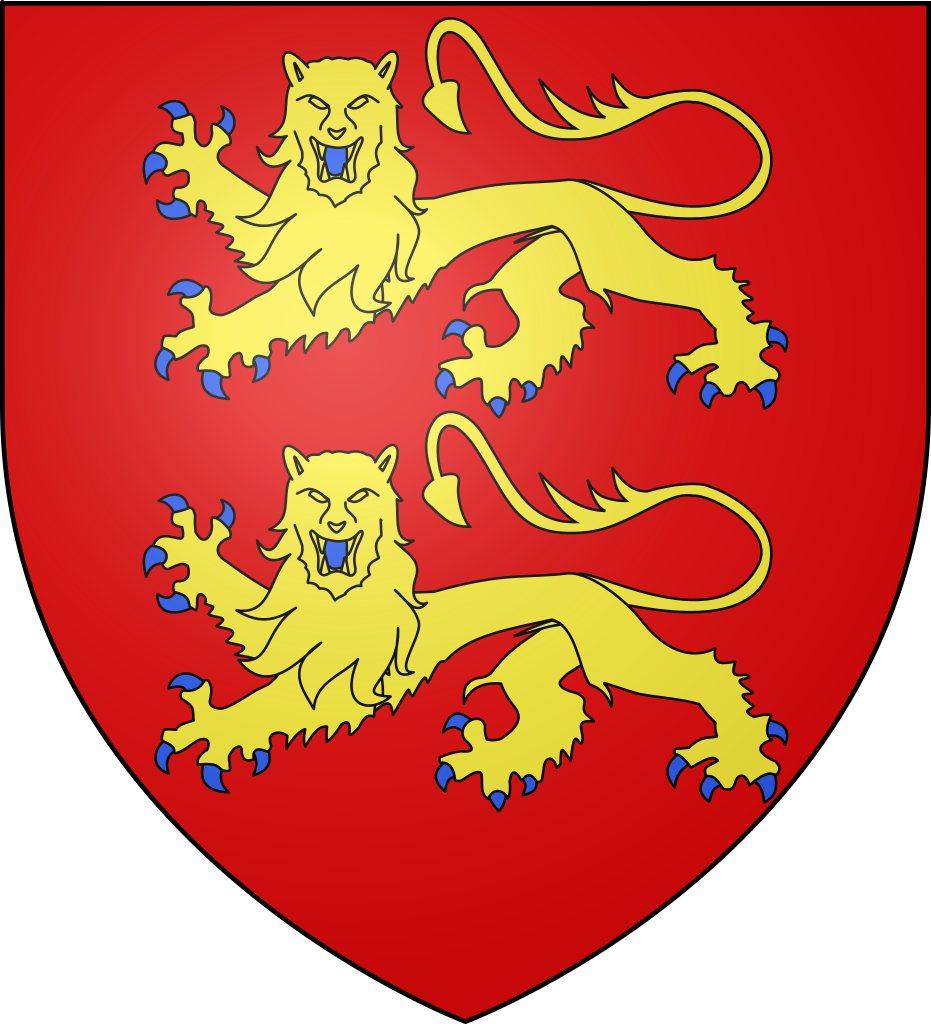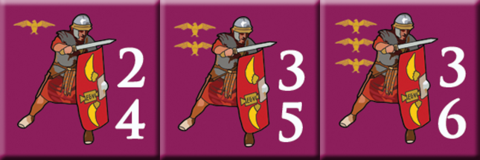Hollandazed: Thoughts, Ideas, and Miscellany — gameplay
A TOUCH OF COMBAT CLASS: THE ABC’S OF S&S II (by Tom Russell)

Coat of arms of the duchy of Normandy Units in the Shields & Swords II series have two components: their unit type and their combat class. There are technically eight unit types – veterans, infantry, infantry with range (crossbowmen), levies, levies with range (longbows), heavy horse, light horse, and light horse with range (mounted archers) – though two of them, the crossbows and the mounted archers, have yet to make an appearance in either The Grunwald Swords or House of Normandy. The unit classes determine what cool stuff the units can do: whether they can go into shield wall, whether...
BUILDING A VP ENGINE FOR AGRICOLA, MASTER OF BRITAIN (by Tom Russell)

At the end of each of Agricola, Master of Britain’s game turns, you’re required to have met or exceeded a certain Victory Point threshold in order to stay in the game and, eventually, to win the game at the end of Turn 8. The thing to keep in mind is that you don’t earn VP for what you did on that particular turn, but on what you did over the course of all the previous turns. That is, each thing that scores you VP will score you that VP on every subsequent turn so long as the condition applies. Therefore,...
DESIGNING THE AGRICOLA GAME, PART 2 of 2: THE BATTLE SYSTEM (by Tom Russell)

Last week, I discussed the long, stumbling process by which Agricola, Master of Britain was transformed into a solitaire game, and got into some detail about how and why the central cup adjustment mechanism works the way it does. Almost as central as, and spinning out of, that same mechanism is the game’s army-building and battle system. It likewise underwent a dramatic transformation as the game was transformed from two-player contest to solitaire design, though a couple of key elements remained the same. What’s strange is that, perhaps more than anything else, it was these aspects of the original two-player...
OPENING MOVES FOR "THE GRUNWALD SWORDS" (by Tom Russell)

The original monument to the Battle of Grunwald was erected in Kraków for the battle's 500th anniversary. It was destroyed during WWII by the Germans and rebuilt in 1976. Broadly speaking, the Teutonic Player must absolutely protect the camp hexes in his rear at all costs. The Allied Player can win the game immediately if he takes possession of those hexes. The Allied Player's two Polish Wings have the best chance of grabbing it, mostly because they're the ones that are going to stay on the map during the entire game. Naturally, if the Teutonic Player is able to box...
(RE)MAKING SHIELDS & SWORDS, PART TWO: THE SYSTEM (by Tom Russell)

"Battle of Grunwald", Jan Matejko, 1878, 426×987cm So, last time I touched on the history of the original Shields & Swords games, how they sold, why the folio series was cancelled, and why it made sense for Mary and I to resurrect it for Hollandspiele as Shields & Swords II. Today, I'm going to explain the mechanics of the system, how it was tweaked by each of the four S&S games, and how S&S II differs from that iteration. The core of the system is that each player has one or more color-coded Wings, with each Wing made up of...
